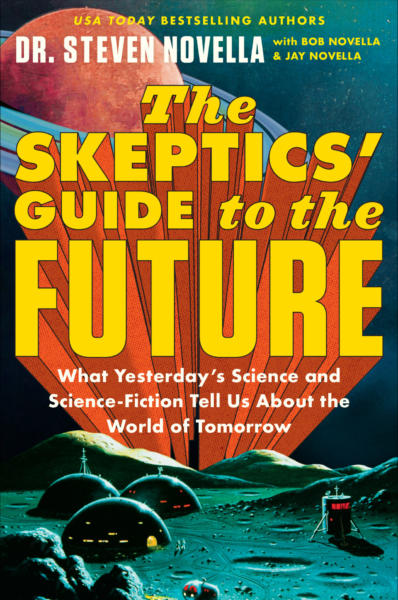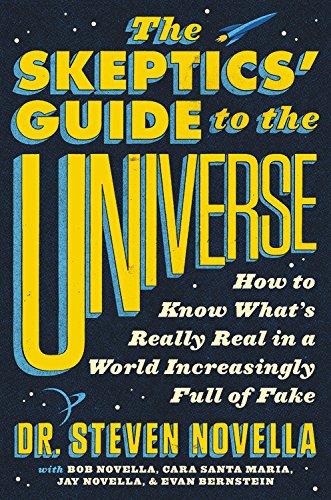Aug
05
2021
 Misinformation is a booming industry, and that is often exactly what it is. Sometimes it may emerge organically, out of sincere error or misunderstanding. But increasingly misinformation is being weaponized to achieve specific goals. That goal might be to protect the interests of a corporation or industry, to promote a candidate or particular policy position, to engage in a broader culture-war, promote an ideology, or just sell a brand or product. Recently it has become more apparent to me that often there is a common strategy to weaponizing misinformation. It’s likely always been there, but is getting more blatant.
Misinformation is a booming industry, and that is often exactly what it is. Sometimes it may emerge organically, out of sincere error or misunderstanding. But increasingly misinformation is being weaponized to achieve specific goals. That goal might be to protect the interests of a corporation or industry, to promote a candidate or particular policy position, to engage in a broader culture-war, promote an ideology, or just sell a brand or product. Recently it has become more apparent to me that often there is a common strategy to weaponizing misinformation. It’s likely always been there, but is getting more blatant.
The “misinformation trifecta” combines three synergistic strategies. The first is spreading the misinformation itself, factual claims that are wrong, misleading, fabricated, cherry-picked, or simply indifferent to the truth. This is the “payload”, if you will. For example, claiming that GMOs are harmful to one’s health is simply wrong. There is no evidence to support this, and in fact there is copious evidence that GMO crops are as safe and healthful and their non-GMO counterparts. This bit of information is used to promote a certain ideology (based on the appeal to nature fallacy) and a competitive brand, organic farming. It is often packaged with lots of other bits of misinformation, all woven together into a certain narrative.
Narratives are powerful because they tend to take on a life of their own. They organize misinformation into a story, and people have an easier time understanding, remembering, and relating to stories rather than isolated facts. Narratives also provide a lens through which we view reality. Once you have sold someone on a narrative, they then curate their own misinformation to further support the narrative.
If misinformation itself were the only issue, then the solution would be straightforward. This is the “knowledge deficit” model, where misinformation is corrected with better, more accurate or complete information. Past efforts at public education and countering misinformation have focused on this knowledge deficit approach. This has a limited (but non-zero) effect. It is highly variable depending on the particular topic, but mostly it is inadequate to counter misinformation.
Continue Reading »
Jul
20
2021
 In February on SBM I wrote about the Race Against Vaccine Hesitancy. At that point in time the pandemic was receding in the US in the face of a rapid vaccination program, but also the first new variants of SARS-CoV-2 were starting to appear. Essentially I argued that we were in a race between achieving herd immunity and the spread of new variants that might be more contagious or even vaccine resistant. Experts believed that we would know the answer by Summer.
In February on SBM I wrote about the Race Against Vaccine Hesitancy. At that point in time the pandemic was receding in the US in the face of a rapid vaccination program, but also the first new variants of SARS-CoV-2 were starting to appear. Essentially I argued that we were in a race between achieving herd immunity and the spread of new variants that might be more contagious or even vaccine resistant. Experts believed that we would know the answer by Summer.
Well, Summer is here, and the answer is in. We lost the race. Vaccine hesitancy won.
This doesn’t mean that the vaccination program has not been massively helpful. It has. As of now 48.6% of the US population is fully vaccinated, with 56.1% having received at least one dose. This includes children under 12, however, who are not currently eligible for any vaccine. A total of 68.3% of adults have been vaccinated, close to the 70% goal set by the Biden administration. From a logistical perspective, this is a success. The program peaked at over 3 million doses given per day. The program meant that the limiting factor was not the availability of vaccines or the ability to distribute and administer them. The limiting factor is people willing to get vaccinated.
While we may have come close, we did not achieve sufficient herd immunity. Part of the problem is that the vaccinated are not evenly distributed throughout the population. Vaccine uptake is patchy, which means there are clusters of unvaccinated people where the virus is free to spread. Arkansas, for example, is only at 35% fully vaccinated.
Continue Reading »
Jun
08
2021
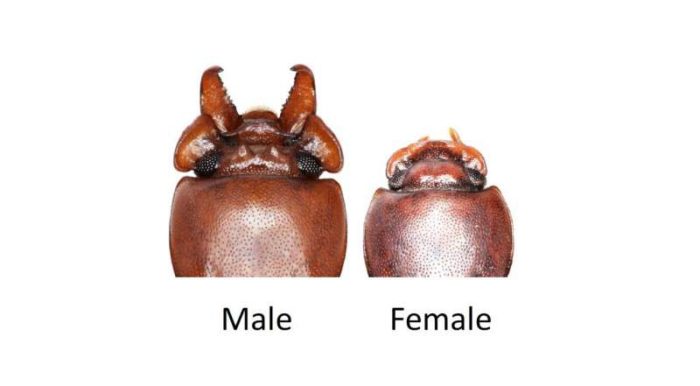 Evolution if one of the most fascinating scientific phenomena because it is so complex and operates over such varying and long timescales. It’s a real challenge to wrap one’s head around. There is therefore a tendency to settle on overly simplistic evolutionary narratives. This is not a criticism, we all do this in an attempt to grapple with evolutionary thinking. The challenge is to recognize this fact, and be open to a deeper, more complex and nuanced understanding of evolutionary processes. It’s a great example of what should be a general intellectual posture – recognize the limits of our current understanding (wherever that may be on the spectrum) and not only be open to, but seek out new information and concepts to keep incrementally pushing our understanding forward.
Evolution if one of the most fascinating scientific phenomena because it is so complex and operates over such varying and long timescales. It’s a real challenge to wrap one’s head around. There is therefore a tendency to settle on overly simplistic evolutionary narratives. This is not a criticism, we all do this in an attempt to grapple with evolutionary thinking. The challenge is to recognize this fact, and be open to a deeper, more complex and nuanced understanding of evolutionary processes. It’s a great example of what should be a general intellectual posture – recognize the limits of our current understanding (wherever that may be on the spectrum) and not only be open to, but seek out new information and concepts to keep incrementally pushing our understanding forward.
In that spirit, here is a study on the evolution of broad-horned flour-beetles that illustrates some of evolution’s complexity. The male broad-horned has exaggeratedly large mandibles, which is uses to compete with other males for mating access to females. This is an example of sexual selection, when a feature specifically increases mating success but is not necessarily broadly adaptable. The go-to example of this is the peacock’s tail feathers – a garish display meant to attract females, but an evolutionary burden in many other aspects. This sets up an evolutionary tug-of-war, where a feature may be advantageous in one respect but disadvantageous in another. Evolutionary processes are fairly efficient at balancing such conflicting forces.
As an aside, the balances tend to be only metastable. They can alter with changes in the environment or behavior. Even different individuals within a species can adopt different survival strategies that result in a different balance of traits. If a population within a species does this it may even eventually lead to a speciation event. For example, it has been documented that within some primate species dominant males will have access to females due to their alpha status, while others gain access by currying favor with the alpha, and still others gain access by gaining favor with the females and sneaking behind the alpha’s back. Still others may act as a “wing man” to a close kin, promoting their genes into the next generation by proxy. The lesson here is – no one strategy captures the wide diversity of behavior even within a single species.
Continue Reading »
May
27
2021

The pandemic has brought into sharp focus the potential danger of misinformation. There are times when we need to act collectively as a society to accomplish certain goals. This is particularly challenging in a society that is organized around a principle of individualism – a principle I endorse and value. Liberty is a precious right to be jealously defended. But it is not the only right, or principle of value. So at times we have to delicately balance various competing interests. I like my freedom, but I also really like not catching a deadly disease, or spreading it to my family.
In a perfect world (one we definitely do not live in) there would be no need for restrictive or draconian measures. All that would be necessary was distributing information – hey, if you want to protect yourself and others, wear a mask, socially distance, wash your hands, and get vaccinated. If you’re really interested, here are the facts, the published studies, the expert analysis, to back up these recommendations. Here are the error bars and level of uncertainty, the risk vs benefit analysis, and comparison to other options.
This approach is necessary, and works to a degree, but it is insufficient. There are two main shortcomings of the information approach. First, people are only semi-rational beings, not Vulcans. We are susceptible to tribalism, motivated reasoning, confirmation bias, and a host of cognitive biases, faulty heuristics, and logical fallacies. Our intuitions about balancing risk and benefit are also flawed, and we have a hard time dealing with very large numbers. Just peruse the comments to any blog post on this site that is even slightly controversial and you will find copious examples of every type of flawed thinking.
Continue Reading »
Mar
08
2021
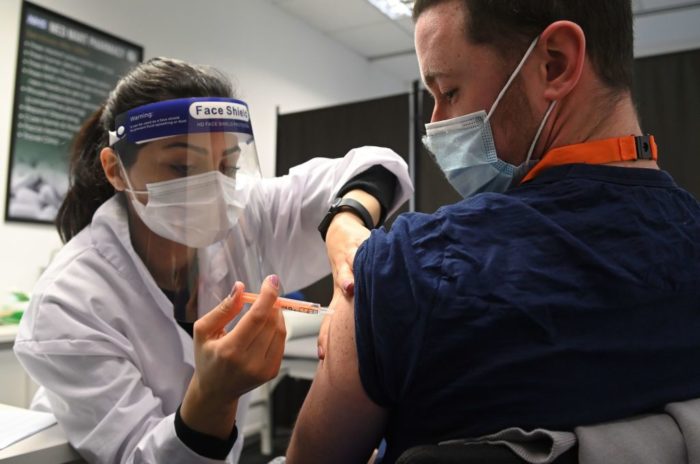 We know a lot more now about SARS-CoV-2 and COVID-19 than we did a year ago when this pandemic was just getting into full swing. One of the big questions was about the emergence of new variants – how fast does the virus mutate, and what is the probability of variants with new properties emerging? Scientists have been tracking the variants since the beginning. It’s actually a good way to track the spread of the virus, and our ability to sequence the genome of specific viruses is fairly advanced.
We know a lot more now about SARS-CoV-2 and COVID-19 than we did a year ago when this pandemic was just getting into full swing. One of the big questions was about the emergence of new variants – how fast does the virus mutate, and what is the probability of variants with new properties emerging? Scientists have been tracking the variants since the beginning. It’s actually a good way to track the spread of the virus, and our ability to sequence the genome of specific viruses is fairly advanced.
As of August 2020 scientists had identified six strains or variants of SARS-CoV-2, without any significant difference in biological function among them. This was encouraging – the hope was that this virus mutates slowly and that no functionally new versions would emerge. This is important for two reasons. The first is the question of whether or not someone who has already suffered COVID-19 or been infected without symptoms could become reinfected. This is partly about the strength of the immune response to infection, but also about whether or not new strains would be able to bypass immunity to older strains.
However, by the beginning of 2021 two things were happening, one good, one bad. Vaccine distribution was ramping up. Several vaccines were approved toward the end of 2020 and while initial distribution was slow, it is speeding up. By now almost 59 million Americans have received at least one dose of a vaccine, and we are being promised availability for everyone who wants a vaccine by May. At the same time daily new cases of COVID are dropping fast, although still relatively high compared to the Spring and Summer of 2020.
But the bad news is that three new variants of SARS-CoV-2 have now been identified that are functionally different – one identified in the UK, one in South Africa, and one in Brazil. These variants have several mutations affecting the structure of the spike protein that gives coronavirus its name, and is responsible for its ability to infect cells. Spike proteins are also a target of antibodies produced by infection or vaccine. As news about these variants comes dripping it, it’s not good. All three appear to be more infectious. They spread more easily than the older variants, which means more robust protection might be necessary to prevent spread. Further, because of their increased infectivity, they are rapidly becoming the dominant strains where they spread.
Continue Reading »
Jan
19
2021
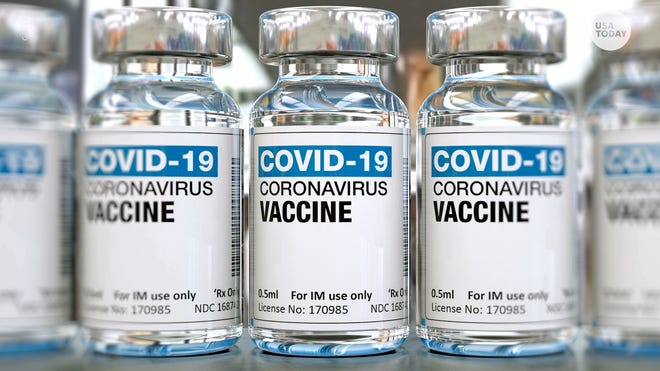 This was inevitable. We are in the midst of a massive rollout of two new vaccines for COVID-19. Anxiety and fatigue levels from the pandemic are already running high, and there is a pre-existing anti-vaccine movement who is sure to exploit this. But perhaps most significantly, we are now living in a post-social media world. Information, even medical or scientific information, may get to the public unfiltered, ripe to be misinterpreted by people who do not understand the relevant science. Such is the case with a “viral” video showing a woman who claims her symptoms are a side effect of the Moderna vaccine (short answer – they almost certainly are not).
This was inevitable. We are in the midst of a massive rollout of two new vaccines for COVID-19. Anxiety and fatigue levels from the pandemic are already running high, and there is a pre-existing anti-vaccine movement who is sure to exploit this. But perhaps most significantly, we are now living in a post-social media world. Information, even medical or scientific information, may get to the public unfiltered, ripe to be misinterpreted by people who do not understand the relevant science. Such is the case with a “viral” video showing a woman who claims her symptoms are a side effect of the Moderna vaccine (short answer – they almost certainly are not).
Messaging is critical to the success of public health measures. Normally information about possible side effects from a drug or vaccine would be filtered through medical experts. When millions of people are involved there is going to be a lot of noise. Coincidence alone would result in many negative outcomes occurring by chance alone shortly after getting a vaccine. Epidemiologists need to look for patterns in the data that indicate there is likely to be an actual causal relationship to the vaccine. It helps if there is also a plausible mechanism. This system has captured vaccine side effects in the past, so you cannot reasonably argue that the system is rigged not to find such associations. The swine flu vaccine in the 1970s caused cases of Guillaine Barre Syndrome. A specific flu vaccine (Pandemrix – no longer on the market) likely caused cases of narcolepsy in 2009. So if any of the current COVID vaccines have a similar side effect, we will catch it.
Reporting scary anecdotes that have not been scientifically evaluated to the public is not a good idea. This is likely to misinform rather than inform, and will have a death toll attached to it. But with social media there is no way to stop this from happening, so we just have to do damage control when it does.
As a side note, I have to point out that I usually refrain from commenting on a specific individual’s medical condition in public. This is to respect the privacy of those individuals, and also because if I have not personally examined them and taken their history, commenting is inappropriate. But medical science communicators can comment about topics relevant to a public case or issue. I can speak generally about the relevant topics. There is also an exception when a private person puts their own medical history into the public domain, especially if they also use that history to make recommendations to the public, and doubly so if those recommendations are false and harmful. They have surrendered any expectation of privacy and they have made their own personal history relevant to the discussion about a public health issue. That is the case here.
Continue Reading »
Dec
17
2020
 As the first crop of SARS-CoV-2 vaccines are being rolled out, we can start to see the light at the end of this pandemic tunnel. Still, in the US alone there will probably be another 200,000 deaths before we reach herd immunity. Further, as fast as this vaccine development and deployment was, it’s not clear how much faster it will bring an end to the pandemic. We will likely be 18 months into the pandemic before we have significant vaccine uptake, and that may not be far off from how long the pandemic was going to last in the first place. There is no doubt is will save lives and hasten the end, but still – only after we lost about half a million people to the virus.
As the first crop of SARS-CoV-2 vaccines are being rolled out, we can start to see the light at the end of this pandemic tunnel. Still, in the US alone there will probably be another 200,000 deaths before we reach herd immunity. Further, as fast as this vaccine development and deployment was, it’s not clear how much faster it will bring an end to the pandemic. We will likely be 18 months into the pandemic before we have significant vaccine uptake, and that may not be far off from how long the pandemic was going to last in the first place. There is no doubt is will save lives and hasten the end, but still – only after we lost about half a million people to the virus.
The question for the future, therefore, is this – is it possible to develop a vaccine even more quickly? What if we could get a vaccine out, soup to nuts, in just a couple of months. We could have ended the pandemic before it really began. The first shots could have been going out in March, protecting front-line workers and the most vulnerable. This would have dramatically slowed the spread while the general population got the vaccine. By now we would be at the tail end of distribution, not the beginning. The COVID pandemic which disrupted the world would have been more like a mild flu season.
Is this feasible? The answer is a definite yes. In fact, as is now being widely reported, it took Moderna just two days to develop their vaccine. They had the vaccine – in January. This is because Moderna has spent the last 10 years developing the mRNA vaccine technology that they used in their COVID vaccine. This, in fact, is the huge advantage of mRNA vaccines, and partly why this technology was being developed. It worked as designed. As soon as the Chinese government released the genetic sequence of the SARS-CoV-2 virus, that was all Moderna needed. They identified the sequence for the spike protein, plugged that into their vaccine platform, and voila – an mRNA vaccine against the SARS-CoV-2 virus. Actually, I’m sure it was more complex than that, but whatever the technical details, it took only two days. And the core idea here is valid – they really only needed the genetic sequence of the organism, which itself now can be done very quickly.
Continue Reading »
Dec
15
2020
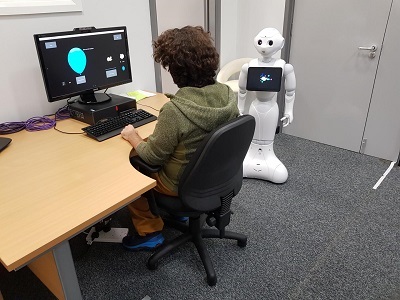 How susceptible would you be to suggestion or even manipulation by a robot, or even just a digital AI (artificial intelligence)? This is one of those questions where almost everyone thinks they would not be affected, while in reality many or even most people are. We don’t like to think that our behavior can easily be manipulated, but a century of psychological research tells a different story. There is an entire industry of marketing, advertising, and product placement based on the belief that your behaviors can be deliberately altered, and not just through persuasion but through psychological manipulation. Just look at our current political environment, and how easily large portions of our society can be convinced to at least express support for absurd ideas, simply by pushing the right buttons.
How susceptible would you be to suggestion or even manipulation by a robot, or even just a digital AI (artificial intelligence)? This is one of those questions where almost everyone thinks they would not be affected, while in reality many or even most people are. We don’t like to think that our behavior can easily be manipulated, but a century of psychological research tells a different story. There is an entire industry of marketing, advertising, and product placement based on the belief that your behaviors can be deliberately altered, and not just through persuasion but through psychological manipulation. Just look at our current political environment, and how easily large portions of our society can be convinced to at least express support for absurd ideas, simply by pushing the right buttons.
Robots and AI are likely to play dramatically increased roles in our society in the future. In fact, our world is already infused with AI to a greater extent that we realize. You have probably interacted with a bot online and didn’t realize it. For example, a recent study found that about half of twitter accounting spreading information about coronavirus are likely bots. What about when you know that an actual physical robot is the one giving you feedback – will that still affect your behavior. Apparently so.
In a recent study psychologists had subjects play a computer game which has already been validated as a marker of risk taking. The game involves hitting the space bar to inflate a digital balloon. As the balloon gets bigger, it becomes worth more digital pennies. You can cash in at any time. However, at random the balloon can also pop, and you then lose all your money. The more risk you take, the more money you can make, but the greater the chance that you lose it all, at least on that go. The researchers had subjects play the game in one of three scenarios – alone, with a robot present who told them when to begin, but then was silent, and with a robot present that would give them encouragement to keep going.
The group with the encouraging robot took significantly more risk in this game than the other two groups, which did not differ from each other. It would have been fun to have a fourth group with a human giving encouragement to see if that differed from the robot – perhaps in a follow up experiment. It’s also interesting that the robot-riskier group made more money than the other two groups. What do these results mean?
Continue Reading »
Nov
23
2020
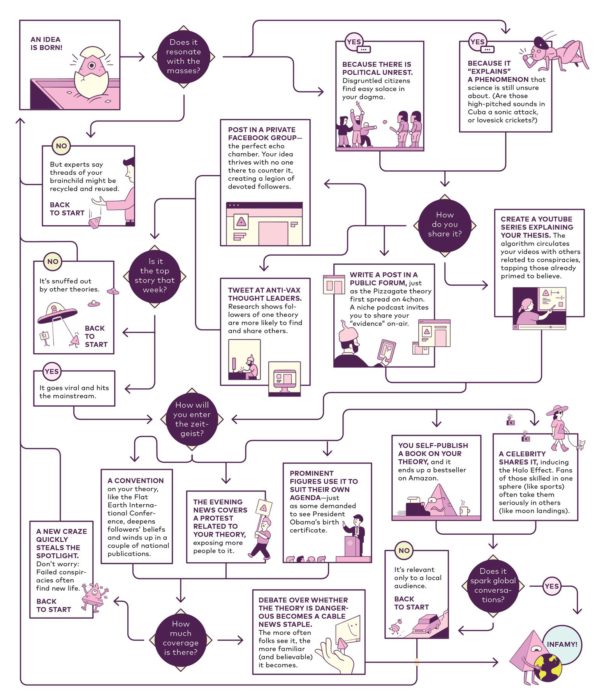 In 2019 PopSci published a flow chart they called “How to Start a Conspiracy Theory.” It’s not really about conspiracy theories themselves, but rather how to popularize an extreme idea. Many extreme claims are conspiracy theories, or at least incorporate conspiracy thinking as a way to justify themselves, so there is a lot of overlap.
In 2019 PopSci published a flow chart they called “How to Start a Conspiracy Theory.” It’s not really about conspiracy theories themselves, but rather how to popularize an extreme idea. Many extreme claims are conspiracy theories, or at least incorporate conspiracy thinking as a way to justify themselves, so there is a lot of overlap.
What the chart really reflects is how to use social media and other outlets to weaponize disinformation. Let’s take a look at what I think are the main features, and then we can see how they apply specifically to conspiracy theories. The process starts by coming up with an idea that “resonates” with the public. This is probably the hard part as there are lots of ideas out there, and it is difficult to just invent something that will go viral. This is more like winning the lottery than an engineered result. But essentially the flow chart reflects an iterative process by which you keep tweaking the idea until it takes off.
If your goal is to manufacture viral misinformation, there are a few ways to almost guarantee this will work. The first is to already be plugged into a major information outlet, like a news network, a political party, or a celebrity. This is no guarantee, but it magnifies the chances of success by orders of magnitude over just being a member of the general public. This can also work indirectly if you have the resources to push your idea through those outlets (such as lots of money, or the resources of a country).
You can also crowd-source the iterative process. This is essentially what happens when there is an existing information ecosystem surrounding an ideology. For example, anti-vaxxers are already well established enough to have their own social media ecosystem, and they can collectively iterate ideas in their internal incubator, and then push those that seem to work best. Extreme political ecosystems work the same way, pushing all kinds of crazy ideas internally with their loyal base, and then trying to export them to the mainstream media. Occasionally an idea will hit.
Continue Reading »
Sep
29
2020
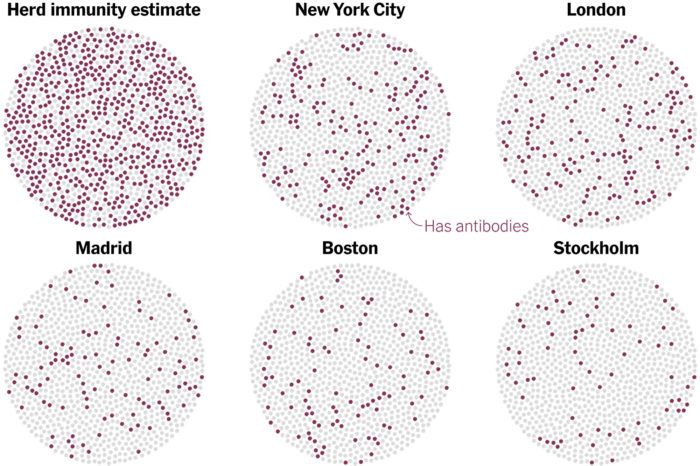 One question weighing on the minds of many people today is – when will this all end? And by “this” (well, one of the “thises”) I mean the pandemic. Experts have been saying all along that we need to buckle up and get read for a long ride on the pandemic express. This is a marathon, and we need to be psychologically prepared for what we are doing now being the new normal for a long time. The big question is – what will it take to end the pandemic?
One question weighing on the minds of many people today is – when will this all end? And by “this” (well, one of the “thises”) I mean the pandemic. Experts have been saying all along that we need to buckle up and get read for a long ride on the pandemic express. This is a marathon, and we need to be psychologically prepared for what we are doing now being the new normal for a long time. The big question is – what will it take to end the pandemic?
Many people are pinning their hopes on a vaccine (or several). This is probably our best chance, and the world-wide effort to quickly develop possible vaccines against SARS-CoV-2 has been impressive. There are currently 11 vaccines in late stage Phase 3 clinical trials. There are also 5 vaccines approved for limited early use. No vaccines are yet approved for general use. If all goes well we might expect one or more vaccines to have general approval by the end of the year, which means wide distribution by the end of 2021. That is, if all goes well. This is still new, and we are fast-tracking this vaccine. This is not a bad thing and does not necessarily mean we are rushing it, but it means we won’t know until we know. Scientists need to confirm how much immunity any particular vaccine produces, and how long it lasts. We also need to track them seriously for side effects.
Early on there was much speculation about the pandemic just burning itself out, or being seasonal and so going away in the summer. Neither of these things happened. In fact, the pandemic is giving the virus lots of opportunity to mutate, and a new more contagious strain of the virus has been dominating since July. Pandemics do eventually end, but that’s not the same as them going away. Some viruses just become endemic in the world population, and they come and go over time. We now, for example, just live with the flu, and with HIV. So perhaps COVID will just be one more chronic illness plaguing humanity that we have to deal with.
But what about herd immunity? The point of an aggressive vaccine program is to create herd immunity – giving so many people resistance that the virus has difficulty finding susceptible hosts and cannot easily spread. The percent of the population with immunity necessary for this to happen depends on how contagious the infectious agent is, and ranges from about 50-90%. We don’t know yet where COVID-19 falls, but this is a contagious virus so will probably be closer to 90%. One question is, how much immunity is the pandemic itself causing, and will we naturally get to herd immunity, even without a vaccine? The results of a new study suggest the answer is no.
Continue Reading »
 Misinformation is a booming industry, and that is often exactly what it is. Sometimes it may emerge organically, out of sincere error or misunderstanding. But increasingly misinformation is being weaponized to achieve specific goals. That goal might be to protect the interests of a corporation or industry, to promote a candidate or particular policy position, to engage in a broader culture-war, promote an ideology, or just sell a brand or product. Recently it has become more apparent to me that often there is a common strategy to weaponizing misinformation. It’s likely always been there, but is getting more blatant.
Misinformation is a booming industry, and that is often exactly what it is. Sometimes it may emerge organically, out of sincere error or misunderstanding. But increasingly misinformation is being weaponized to achieve specific goals. That goal might be to protect the interests of a corporation or industry, to promote a candidate or particular policy position, to engage in a broader culture-war, promote an ideology, or just sell a brand or product. Recently it has become more apparent to me that often there is a common strategy to weaponizing misinformation. It’s likely always been there, but is getting more blatant.
 In February on SBM I wrote about the
In February on SBM I wrote about the Evolution if one of the most fascinating scientific phenomena because it is so complex and operates over such varying and long timescales. It’s a real challenge to wrap one’s head around. There is therefore a tendency to settle on overly simplistic evolutionary narratives. This is not a criticism, we all do this in an attempt to grapple with evolutionary thinking. The challenge is to recognize this fact, and be open to a deeper, more complex and nuanced understanding of evolutionary processes. It’s a great example of what should be a general intellectual posture – recognize the limits of our current understanding (wherever that may be on the spectrum) and not only be open to, but seek out new information and concepts to keep incrementally pushing our understanding forward.
Evolution if one of the most fascinating scientific phenomena because it is so complex and operates over such varying and long timescales. It’s a real challenge to wrap one’s head around. There is therefore a tendency to settle on overly simplistic evolutionary narratives. This is not a criticism, we all do this in an attempt to grapple with evolutionary thinking. The challenge is to recognize this fact, and be open to a deeper, more complex and nuanced understanding of evolutionary processes. It’s a great example of what should be a general intellectual posture – recognize the limits of our current understanding (wherever that may be on the spectrum) and not only be open to, but seek out new information and concepts to keep incrementally pushing our understanding forward.
 We know a lot more now about SARS-CoV-2 and COVID-19 than we did a year ago when this pandemic was just getting into full swing. One of the big questions was about the emergence of new variants – how fast does the virus mutate, and what is the probability of variants with new properties emerging? Scientists have been tracking the variants since the beginning. It’s actually a good way to track the spread of the virus, and our ability to sequence the genome of specific viruses is fairly advanced.
We know a lot more now about SARS-CoV-2 and COVID-19 than we did a year ago when this pandemic was just getting into full swing. One of the big questions was about the emergence of new variants – how fast does the virus mutate, and what is the probability of variants with new properties emerging? Scientists have been tracking the variants since the beginning. It’s actually a good way to track the spread of the virus, and our ability to sequence the genome of specific viruses is fairly advanced. This was inevitable. We are in the midst of a massive rollout of two new vaccines for COVID-19. Anxiety and fatigue levels from the pandemic are already running high, and there is a pre-existing anti-vaccine movement who is sure to exploit this. But perhaps most significantly, we are now living in a post-social media world. Information, even medical or scientific information, may get to the public unfiltered, ripe to be misinterpreted by people who do not understand the relevant science. Such is the case with
This was inevitable. We are in the midst of a massive rollout of two new vaccines for COVID-19. Anxiety and fatigue levels from the pandemic are already running high, and there is a pre-existing anti-vaccine movement who is sure to exploit this. But perhaps most significantly, we are now living in a post-social media world. Information, even medical or scientific information, may get to the public unfiltered, ripe to be misinterpreted by people who do not understand the relevant science. Such is the case with  As the first crop of SARS-CoV-2 vaccines are being rolled out, we can start to see the light at the end of this pandemic tunnel. Still, in the US alone there will probably be another 200,000 deaths before we reach herd immunity. Further, as fast as this vaccine development and deployment was, it’s not clear how much faster it will bring an end to the pandemic. We will likely be 18 months into the pandemic before we have significant vaccine uptake, and that may not be far off from how long the pandemic was going to last in the first place. There is no doubt is will save lives and hasten the end, but still – only after we lost about half a million people to the virus.
As the first crop of SARS-CoV-2 vaccines are being rolled out, we can start to see the light at the end of this pandemic tunnel. Still, in the US alone there will probably be another 200,000 deaths before we reach herd immunity. Further, as fast as this vaccine development and deployment was, it’s not clear how much faster it will bring an end to the pandemic. We will likely be 18 months into the pandemic before we have significant vaccine uptake, and that may not be far off from how long the pandemic was going to last in the first place. There is no doubt is will save lives and hasten the end, but still – only after we lost about half a million people to the virus. How susceptible would you be to suggestion or even manipulation by a robot, or even just a digital AI (artificial intelligence)? This is one of those questions where almost everyone thinks they would not be affected, while in reality many or even most people are. We don’t like to think that our behavior can easily be manipulated, but a century of psychological research tells a different story. There is an entire industry of marketing, advertising, and product placement based on the belief that your behaviors can be deliberately altered, and not just through persuasion but through psychological manipulation. Just look at our current political environment, and how easily large portions of our society can be convinced to at least express support for absurd ideas, simply by pushing the right buttons.
How susceptible would you be to suggestion or even manipulation by a robot, or even just a digital AI (artificial intelligence)? This is one of those questions where almost everyone thinks they would not be affected, while in reality many or even most people are. We don’t like to think that our behavior can easily be manipulated, but a century of psychological research tells a different story. There is an entire industry of marketing, advertising, and product placement based on the belief that your behaviors can be deliberately altered, and not just through persuasion but through psychological manipulation. Just look at our current political environment, and how easily large portions of our society can be convinced to at least express support for absurd ideas, simply by pushing the right buttons. In 2019 PopSci published a flow chart they called “
In 2019 PopSci published a flow chart they called “ One question weighing on the minds of many people today is – when will this all end? And by “this” (well, one of the “thises”) I mean the pandemic. Experts have been saying all along that we need to buckle up and get read for a long ride on the pandemic express. This is a marathon, and we need to be psychologically prepared for what we are doing now being the new normal for a long time. The big question is – what will it take to end the pandemic?
One question weighing on the minds of many people today is – when will this all end? And by “this” (well, one of the “thises”) I mean the pandemic. Experts have been saying all along that we need to buckle up and get read for a long ride on the pandemic express. This is a marathon, and we need to be psychologically prepared for what we are doing now being the new normal for a long time. The big question is – what will it take to end the pandemic?



